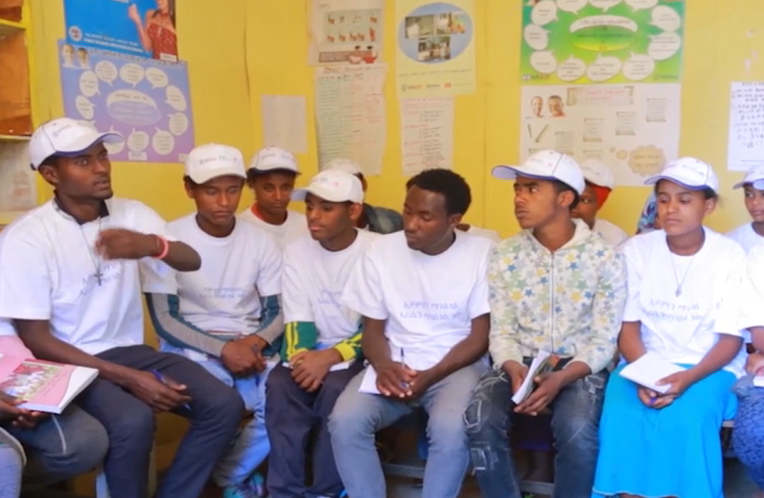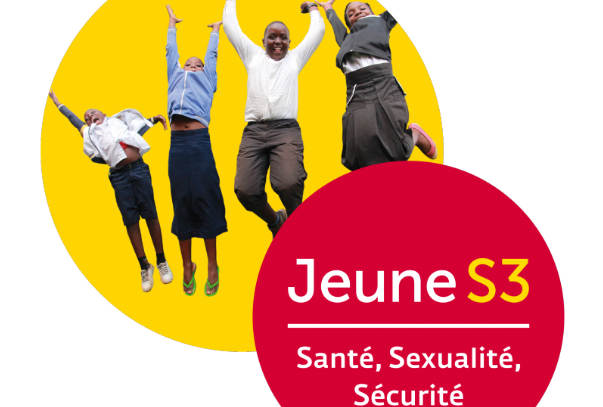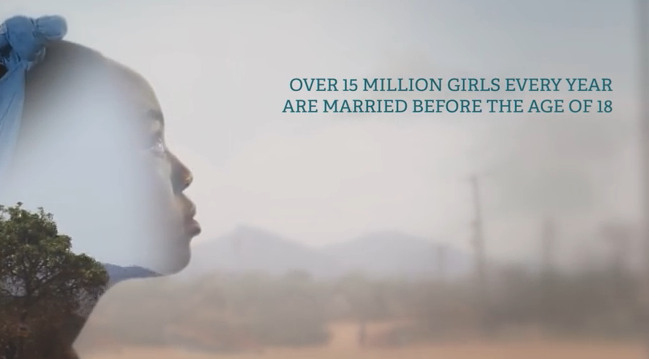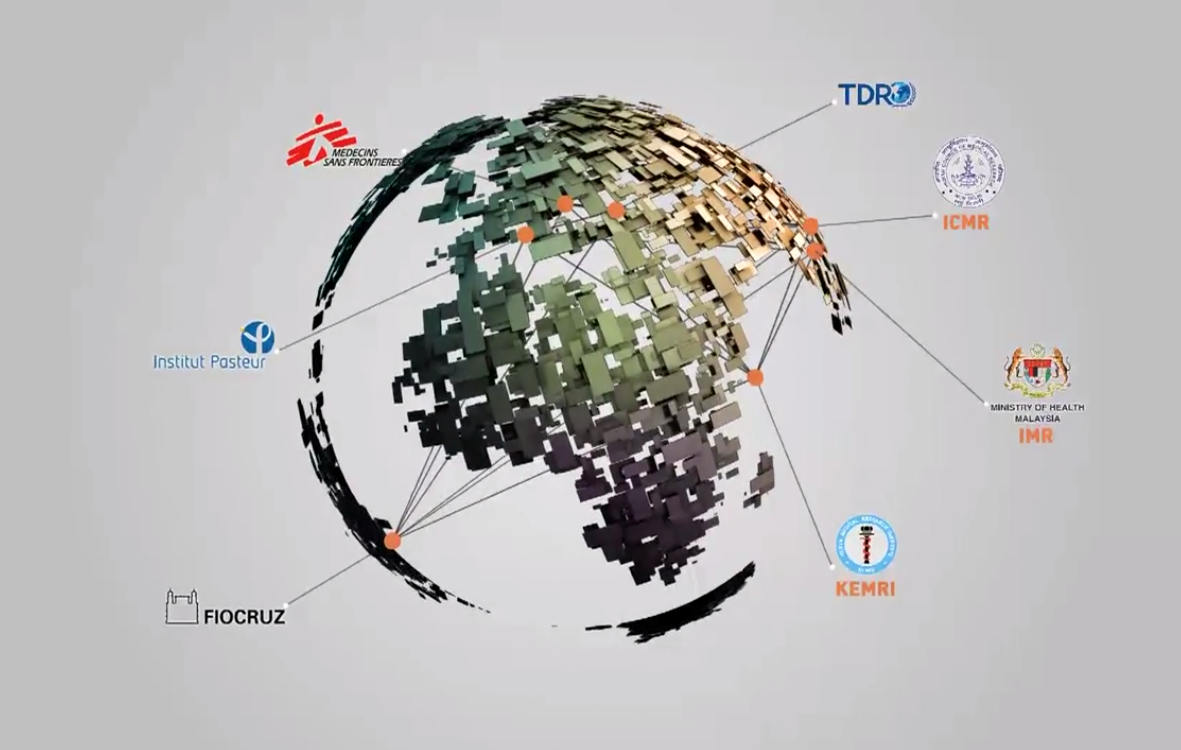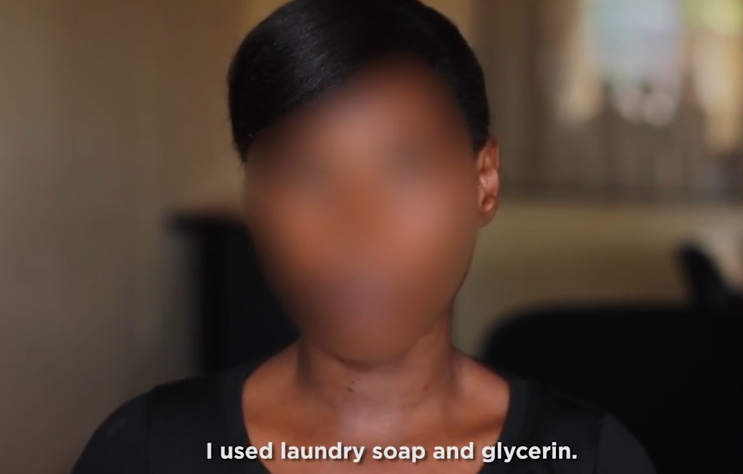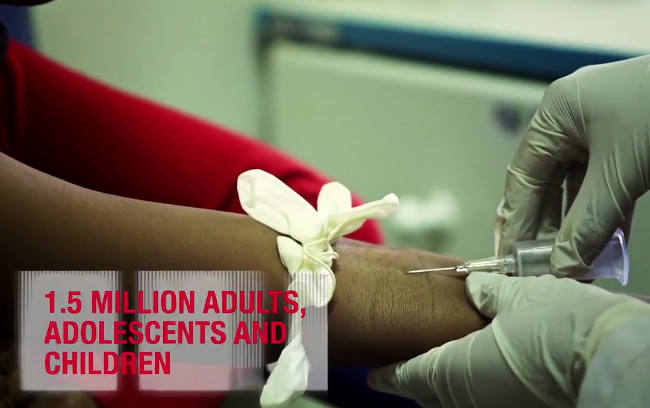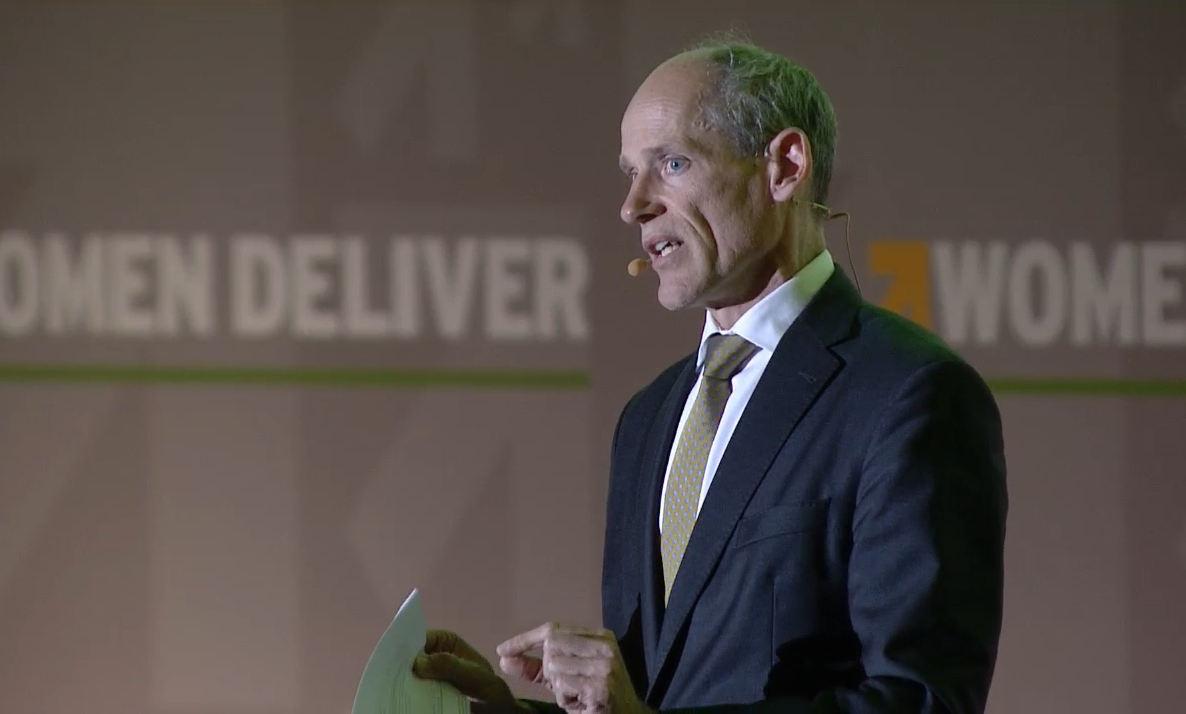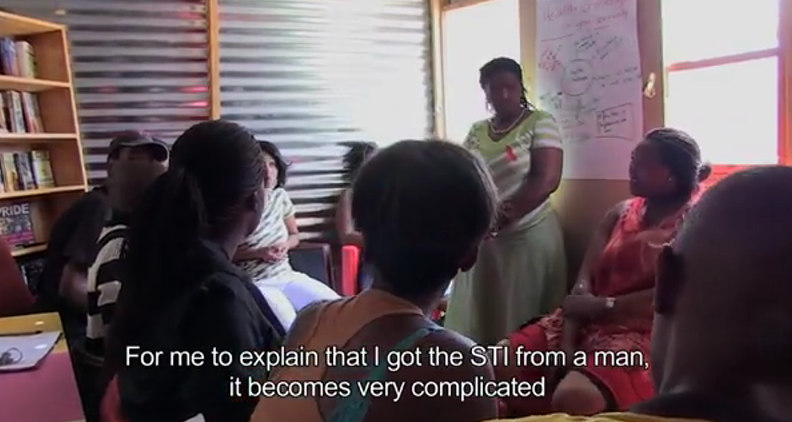Select indicator
 Youth, information & choice
Youth, information & choice
Freedom of choice and access to better information and services leads to youths making healthier choices regarding their sexuality.
Young people reached with comprehensive, correct information on sexuality, HIV/AIDS, STIs, pregnancy and contraception
Teenage Pregnancy in Ethiopia
What does this indicator mean?
Young people face disproportionately large obstacles when it comes to their sexual and reproductive health and rights (SRHR). Knowledge of SRHR is crucial for people to prevent pregnancy, sexual exploitation or HIV infection, and make healthier choices regarding their treatment and sexuality.
Access to information about sexuality (comprehensive sexuality education) is necessary to achieve this. Most recent figures show that only 30% of females and 37% of males aged 15-24 had comprehensive knowledge of HIV/AIDS in Sub-Saharan Africa.
What does the result mean?
In 2016, several Netherlands-supported organisations provided information on sexuality, HIV, sexually transmitted infections (STIs), pregnancy and contraceptives to more than 7 million youths in and out of school. Almost 3.5 million of these youths were reached through bilateral programmes organised by the Dutch embassies in Bangladesh, Benin, Ethiopia, Ghana, Mali, Mozambique and Yemen.
Youths are reached through training sessions, meetings to share knowledge and debates, in order to acquaint them with correct information on SRHR. A good example is the Get Up Speak Out Alliance of six SRHR organisations, which works with partners in Ethiopia, Ghana, Indonesia, Kenya, Malawi, Pakistan and Uganda. The alliance reached almost 2.5 million young people with SRHR information and education, both face-to-face and through online training.
 Youth, information & choice
Youth, information & choice
Freedom of choice and access to better information and services leads to youths making healthier choices regarding their sexuality.
Health facilities that adopt and implement youth-friendly SRHR and HIV/AIDS services
The Jeune S3 programme
What does this indicator mean?
Many of the barriers that youths face in accessing health services are unique to young people, due to their stage in life and the communities in which they live, and are associated with special needs, perceptions, and abilities. Youth-friendly services are able to effectively attract young people, meet their needs comfortably and responsively, and retain young clients for continuing care.
Young people need access to health services, in order to pursue their choices regarding their sexual and reproductive health. Medical staff should therefore be aware of HIV and sexual and reproductive health and rights (SRHR), in order to provide youth-friendly services and pass on knowledge.
What does the result mean?
The Netherlands supports several organisations and programmes in their youth-friendly services work, such as the UNFPA-UNICEF Global Programme to accelerate the end of child marriage, which supported 403 health service delivery points in improving their youth-friendly health provision. In 2016, the Netherlands supported a total of 2040 health facilities to become more youth-friendly.
In Benin, the number of youth centres with youth-friendly services has increased from 36 to 41 in 2016, and Burundi added another 111 through Dutch-funded programmes. The Jeune S3 Alliance of Cordaid with three other alliance partners mapped health facilities in fragile areas in Cameroon, Central African Republic and Democratic Republic of Congo, provided training and will continue its efforts to make these health facilities more youth-friendly in 2017.
 Youth, information & choice
Youth, information & choice
Freedom of choice and access to better information and services leads to youths making healthier choices regarding their sexuality.
Harmful practices
We are girls, not brides. An anthem to end child marriage
What does this indicator mean?
Child marriages, female genital mutilation/cutting and commercial sexual exploitation of children are unacceptable and undermine inclusive development. One in four young women in developing countries is married before reaching the age of 18 and 25% of women and girls in Sub-Saharan Africa have undergone female genital mutilation. Not only does marrying young mean that these girls are less likely to remain in school, but it also increases the probability of early pregnancy, which is harmful to both their own and the child’s health.
What does the result mean?
The Down to Zero Alliance of five NGOs works to put an end to the commercial sexual exploitation of children (CSEC) and operates in eleven countries in Asia and Latin America. In 2016, it provided more than 900 CSEC victims with specialist services, such as shelter, health services, education and legal aid. Another 3,667 children were trained on CSEC and how to report cases.
In 2016, three child marriage SRHR Alliances, (Yes I Do, More Than Brides and Her Choice), started to implement their activities. In Malawi, for example, connections were made with a youth organisation (Yoneco) that uses radio and other media to impart important, comprehensive, sexuality education messages. The three child marriage partnerships joined forces by launching a Dutch Girls not Brides chapter, through which they exchange knowledge and experiences.
 Health commodities
Health commodities
Improved access to affordable reproductive health commodities, disease prevention and treatment enables women, young people and key populations to make use of the products that are available and choose what best suits their needs.
Additional women and girls with access to modern contraceptive methods since 2012
Additional women and girls provided with access to modern contraceptives
What does this indicator mean?
The total number of users of modern contraception is calculated using FP2020's Core Indicator 2 (the prevalence of use of modern methods of contraception among all women) and the total number of women of reproductive age in each country. The Dutch results are calculated by applying the 6% Dutch contribution to family planning from FP2020 data.
What does the result mean?
Family planning is one of the most effective and cost-effective ways to save women, girls and children's lives, as well as to improve their health. In 2016, around 300 million women and girls used modern methods of contraception in 69 focus countries, averting 82 million unintended pregnancies, 25 million unsafe abortions and 124,000 maternal deaths. According to FamilyPlanning2020 data, roughly 6% can be attributed to Dutch international funding for family planning.
Still, globally there is large unmet need: an estimated 225 million women in developing countries would like to delay or stop childbearing but are not using any method of contraception. The Netherlands works closely with UN organisations (UNFPA), Dutch and International NGOs (PSI, IPPF, MSI), governments and knowledge institutes (Share-Net, Guttmacher) to improve access to sexual and reproductive health commodities for all people.
 Health commodities
Health commodities
Improved access to affordable reproductive health commodities, disease prevention and treatment enables women, young people and key populations to make use of the products that are available and choose what best suits their needs.
Stimulating the development, availability and affordability of commodities
The work area of the Drugs for Neglected Diseases initiative
What does this indicator mean?
The Product Development Partnerships III Fund (PDP III) of the Ministry of Foreign Affairs focuses on the development and availability of affordable, effective medicines, vaccines, diagnostics and innovative products for neglected diseases and conditions. This contributes to the prevention, diagnostics and treatment of diseases and conditions related to poverty and sexual and reproductive health and rights (SRHR).
The Fund was set up to fund public-private partnerships to accelerate the development and availability of products that are unlikely to attract private investment while in development.
What does the result mean?
The Product Development Partnerships (PDPs) have progressed their innovation and product pipelines, improved access to new or existing medicines, built new partnerships with public and private sector partners, and built research and development capacity in developing countries.
The PDP-funded TB alliance succeeded in a first ever market introduction of a paediatric drug. It has been adopted by 36 countries worldwide. An appropriate medicine now exists for the more than one million children that contract tuberculosis (TB) annually.
The Medicines for Malaria Venture currently has 19 compounds in preclinical and clinical development, and the International Partnership for Microbicides improved the availability of and access to the dapivirine ring, reducing the cost per ring from $12 to $7. Dapivirine is a compound that protects users from HIV infection by preventing the virus from replicating.
A new partner was welcomed into the innovative Drug Discovery Booster of the Drugs for Neglected Diseases initiative. This will further accelerate the exploitation of assets and drug discovery knowledge related to new treatments for neglected tropical diseases, such as hepatitis C and mycetoma.
 Health commodities
Health commodities
Improved access to affordable reproductive health commodities, disease prevention and treatment enables women, young people and key populations to make use of the products that are available and choose what best suits their needs.
People living with HIV receiving anti-retroviral therapy
UNAIDS 2017, globally
What does this indicator mean?
HIV/AIDS continues to have a major impact on social and economic development. Adolescent girls and young women aged 15–24 are particularly vulnerable to contracting the HIV infection. But also key populations, such as sex workers, intravenous drug users, transgender people, prisoners and men having sex with men, are at increased risk.
In 2016, 19.5 million of the 36.7 million people living with HIV had access to treatment. There were 1.8 million new HIV infections. AIDS-related deaths have fallen from 1.9 million in 2005 to 1 million in 2016. Provided that the scale-up continues, this progress puts the world on track to reach the global target of 30 million people in treatment by 2020.
What does the result mean?
The Netherlands invests in international programmes (such as Bridging the Gaps and Pitch) as well as in NGOs (like the International HIV AIDS Alliance IHAA, the Dutch Aidsfonds and the Global Fund to fight AIDS, Tuberculosis and Malaria GFATM).
Thousands of young people and key populations are reached through these programmes. Decreasing barriers to SRHR and increasing access to HIV prevention, care and treatment improves their health and rights.
In 2016, the IHAA and GFATM - with Dutch funding - provided anti-retroviral treatment to 675,000 people living with HIV. Although promising results have been achieved, the enabling legal environment for HIV is still a cause for concern. Today, there are still around 60 countries that criminalise HIV transmission. About 50 countries apply travel restrictions to people living with HIV and almost 90 countries have homophobic laws.
 Healthcare services
Healthcare services
Trained staff, innovative health services and well-equipped public and private clinics are needed for better sexual and reproductive healthcare, including safe abortions.
Health workers trained in ante- and post-natal care, safe deliveries and abortion care
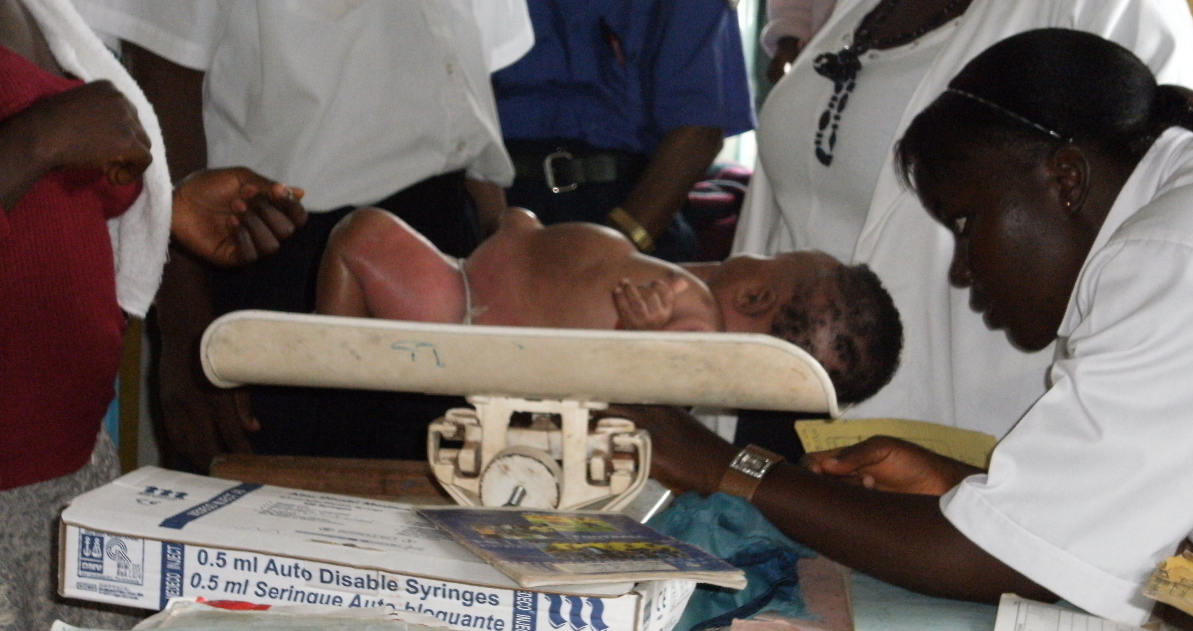
Determine the weight of babies
What does this indicator mean?
Good-quality antenatal care and attendance of births by skilled health personnel greatly contributes to reducing the maternal mortality rate.
In the period 2010-2015, the proportion of women who received antenatal care from skilled health-care personnel at least once during pregnancy was 85% globally and 77% in the least-developed countries.
However, the World Health Organisation (WHO) recommends a minimum of four antenatal care visits. Globally, only 58% of women receive this minimum. For the least-developed regions the figure is 42%.
The percentage of births attended by skilled health personnel is 78% globally but only 52% in Sub-Saharan Africa.
What does the result mean?
In 2016, various Netherlands-supported organisations and programmes (such as Ipas, the Global Fund to Fight AIDS, Tuberculosis and Malaria, Population Services International, Marie Stopes International and the Jeune S3 Alliance), trained or financed the training of 2740 health workers.
Service providers were trained in youth-friendly services, community health workers were trained to refer to the formal health system and medical staff were educated in ante- and post-natal care, safe deliveries and abortion care. All with the purpose of providing access to qualitatively good care.
Apart from providing training, several new guidelines, policies and protocols were updated and published. In Kyrgyzstan, for example, Bridging the Gaps, together with the Ministry of Health, developed a new clinical protocol on pregnant women using drugs. This has now been approved and is an obligatory part of gynaecologists' protocols.
 Healthcare services
Healthcare services
Trained staff, innovative health services and well-equipped public and private clinics are needed for better sexual and reproductive healthcare, including safe abortions.
Comprehensive, safe (post-)abortion care services provided
When abortion is a crime - Rwanda (Ipas)
What does this indicator mean?
It is important to note that a nuanced perspective on targets is required in the provision of safe abortion services. Ideally, the number of abortions will be low, because people have access to modern contraception methods to prevent pregnancy. If women and girls do need an abortion, however, it should be safe.
Increased safe abortion figures can arise from a decreased number of unsafe abortions, due to increased access to safe services and the liberalisation of laws. Growing numbers of safe (post-)abortion care provision could indicate easier access to safe services for people who otherwise would have had an unsafe abortion (positive effect), but could also indicate decreased access to modern contraception methods, resulting in more unintended pregnancies and greater need for abortions (negative effect).
What does the result mean?
With Dutch funding, at least 127,750 women received safe (post-)abortion care, provided and financed by, among others, Ipas, the Safe Abortion Action Fund (SAAF) and many partners via embassy programmes. These organisations also trained health providers, provided technical assistance and supported infrastructure upgrades to ensure qualitatively good (post-)abortion care services.
In Ghana, SAAF-supported partners managed to integrate Comprehensive Abortion Care issues into the midwifery training curriculum in district's training institutions. In Mozambique, the Netherlands' embassy and Population Services International continue to support the roll out of the new legalised abortion guidelines.
 Healthcare services
Healthcare services
Trained staff, innovative health services and well-equipped public and private clinics are needed for better sexual and reproductive healthcare, including safe abortions.
Quality of the health system

Vaccination session in India
What does this indicator mean?
Well-functioning health systems are needed to fulfil sexual and reproductive health and rights (SRHR).
The Maternal Mortality Ratio (MMR) is one of the best proxy indicators for the quality of a health system. The global MMR is 216 deaths per 100,000 live births. In Sub-Saharan Africa this is much higher; 546 deaths per 100,000 live births, with a lifetime risk of maternal death for 1 in every 36 women or girls.
What does the result mean?
The Netherlands supports health system strengthening through bilateral co-operation, multilateral organisations, programmes and NGOs.
For example, this has resulted in social franchising with private clinics in Ethiopia; private sector engagements in the provision of SRH services in Ghana; improved access to life-saving vaccines and the expansion of roadside clinics in Mozambique.
In Yemen, Marie Stopes International - with support from the Netherlands - remained open throughout the ongoing civil war and food crisis, providing vital family planning services to women in the most desperate of circumstances.
 Rights and respect
Rights and respect
Greater respect for sexual and reproductive rights for all, especially those who are often denied these rights, means less stigmatisation and violence, better service delivery, fewer HIV infections, gender equality and health for all.
Key populations receiving SRHR and HIV services
International HIV/AIDS Alliance, results 2016
What does this indicator mean?
Recognition of sexual and reproductive health and rights (SRHR), and gender equality has not yet been achieved globally. In several countries, themes like sexuality, maternal mortality, HIV/AIDS, harm reduction (such as condom distribution and needle exchanges) are difficult to address.
Also, the sexual and reproductive rights of marginalised groups, known as key populations (e.g. sex workers, intravenous drug users and transgender people) are being violated. At the same time, these groups are disproportionately affected by HIV and drug addictions.
What does the result mean?
In 2016, more than 1.2 million key populations (e.g. sex workers, transgender people, intravenous drug users) received SRHR and HIV services through Netherlands-funded programmes. Organisations not only provide services but also shape the enabling environment for an improvement in attitudes towards them from law enforcement and health care providers.
In order to provide key populations with access to SRHR and HIV services, Dutch-supported and -funded organisations educate service providers and law enforcement officials on human rights. They are involved in the drafting of legislation and provide individuals with legal assistance to realise their rights.
In Nepal, Bridging the Gaps introduced smart cards with which injecting drug users can identify themselves to law enforcement officials as clients of a harm reduction programme. The clients reported that this resulted in less harassment, incarceration and involuntary rehabilitation.
 Rights and respect
Rights and respect
Greater respect for sexual and reproductive rights for all, especially those who are often denied these rights, means less stigmatisation and violence, better service delivery, fewer HIV infections, gender equality and health for all.
Changes in laws, guidelines and (health) policies leading to fewer barriers to SRH and HIV/AIDS services

Freedom of choice in not only when and how many children you have, but also with whom you want to have children.
What does this indicator mean?
Due to restrictions in legal documents, guidelines and policies in many countries sexual and reproductive rights and the right to sexual and reproductive health services, information and education are not fully upheld.
Adolescent girls, youth and women in general face multiple barriers in realising these rights. Some specific groups, such sexworkers and transgenders, are often stigmatised and criminalised. The denial of their rights has a serious negative impact on their lives and health.
This is an area where the Netherlands strives to have significant added value since it is one of the few countries that advocates a broad SRHR agenda, including the often considered “sensitive” areas, and for SRHR for all without distinction of any kind.
What does the result mean?
The Netherlands provides financial support, but also political and diplomatic support, to organisations in their lobbying and advocacy work to promote changes.
In Nicaragua, partners in the Down to Zero Alliance were actively involved in creating a national plan of action to eliminate the commercial sexual exploitation of children. In Kenya, the Dutch-supported Get Up Speak Out Alliance contributed to a national guideline for youth-friendly services. In Uganda, partners in the PITCH Alliance contributed to annulling section 15(6) of the Equal Opportunities Commission Act. The International Planned Parenthood Federation contributed to a total of 175 changes in policies and legislation in many countries, touching upon many different aspects of SRHR (e.g. access to safe and legal abortion, youth education and services, support for people living with HIV and access to contraception).
 Rights and respect
Rights and respect
Greater respect for sexual and reproductive rights for all, especially those who are often denied these rights, means less stigmatisation and violence, better service delivery, fewer HIV infections, gender equality and health for all.
Convening power and SRHR diplomacy
The Dutch Ambassador for Sexual and Reproductive Health and Rights, including HIV/AIDS, at Women Deliver 2016
What does this indicator mean?
Sexual and reproductive rights are human rights. Realising these rigths is often subject to taboos and politics. It is important to keep advocating for sexual and reproductive health and rights (SRHR) and to continue the dialogue on more sensitive and neglected topics; in the United Nations, the European Union and on a national level.
SRHR diplomacy needs a long-term strategy, but its efforts are often ad hoc. In addition, the implementation of international agreements, national policies and guidelines remains a challenge.
To implement its SRHR diplomacy, the Netherlands has appointed two special ambassadors for SRHR, including HIV/AIDS, one of which is the Youth Ambassador.
What does the result mean?
Through Dutch diplomacy on SRHR, in 2016, during the United Nations General Assembly, a biannual resolution on the prevention and elimination of violence against women and girls was adopted by consensus. For the first time in the United Nations, member states agreed on the term 'comprehensive sexuality education'.
The Dutch ambassador for SRHR & HIV/AIDS reached out to Eastern European and Central Asian diplomats, policy makers and NGOs in order to enhance dialogue on effective HIV/AIDS policies. He also invited their active participation in the (preparations for) the International AIDS Conference in Amsterdam in 2018.
In her advocacy work, the Youth Ambassador for SRHR promoted a human rights-centred approach as the best approach to policy development for youth and SRHR.





